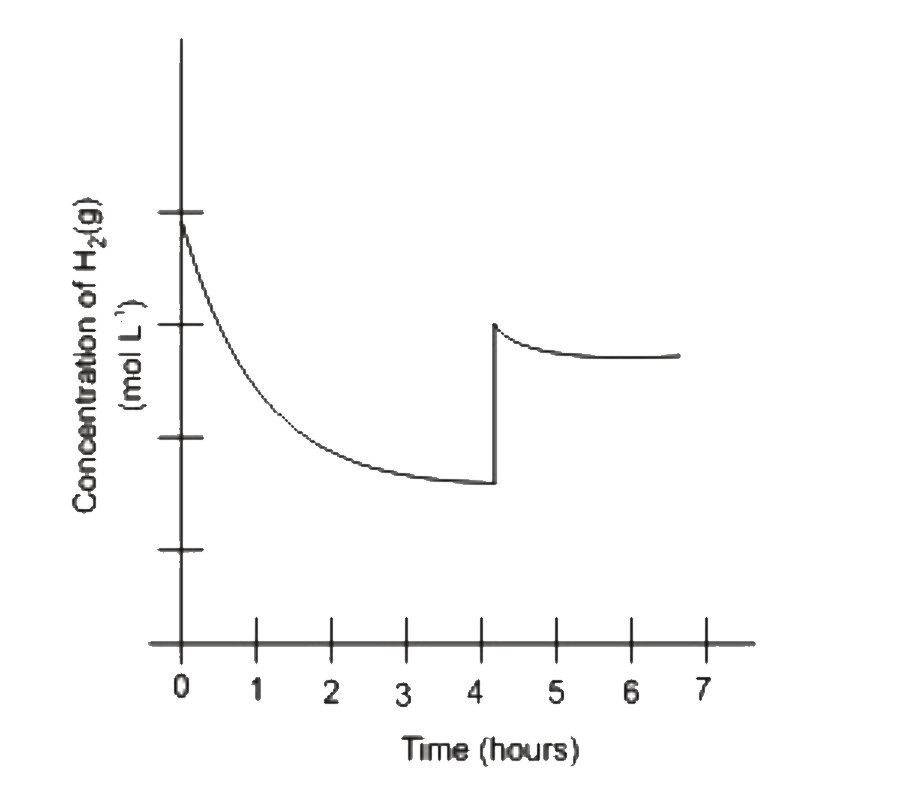100mL of phosphine (PH3) on hearing forms phosphorous (P) and hydrogen (H2). The volume change in the reaction is
an increase of 50 mL
an increase of 110 mL
an increase of 150 mL
a decrease of 50 mL
The correct Answer is:A
2PH32mL100mL(g)→2P(s)+3H23mL150mL(g)
∴ 100 mL of PH3 gives H2=150mL
Increase in volume =150−100=50mL
Topper's Solved these Questions
- BOOK - DINESH PUBLICATIONCHAPTER - SOME BASIC CONCEPTS OF CHEMISTRYEXERCISE - SELECTED STRIGHT OBJECTIVE TYPE MCQs42videos
SOME BASIC CONCEPTS OF CHEMISTRY
- BOOK - DINESH PUBLICATIONCHAPTER - SOME BASIC CONCEPTS OF CHEMISTRYEXERCISE - LINKED COMPREHENSION TYPE MCQs12videos
SOME BASIC CONCEPTS OF CHEMISTRY
- BOOK - DINESH PUBLICATIONCHAPTER - SOME BASIC CONCEPTS OF CHEMISTRYEXERCISE - ULTIMATE PREPARATORY PACKAGE20videos
SOME BASIC CONCEPTS OF CHEMISTRY
- BOOK - DINESH PUBLICATIONCHAPTER - SOLUTIONS EXERCISE - ULTIMATE PREPARATORY PACKAGE10videos
SOLUTIONS
- BOOK - DINESH PUBLICATIONCHAPTER - SURFACE CHEMISTRY EXERCISE - BRAIN STORMING MULTIPLE CHOICE QUESTIONS (MCQs)8videos
SURFACE CHEMISTRY
Similar Questions
If for the reaction 2NH3→N2+3H2 the reaction is started with 2ml of NH3 the total volume of the gases in ml when the reaction is 50% complete will be:
View SolutionThe decomposition of phosphine, PH3, proceeds according to the following equation:
4PH3(g)→P4(g)+6H2(g)
It is found that the reaction follows the following rate equation:
Rate =k[PH3].
The half-life of PH3 is 37.9s at 120∘C.
(i) How much time is required for 3/4th of PH3 to decompose?
(ii) What fraction of the original sample of PH3 remains behind after 1 minute?View Solution
Knowledge Check
- Question 1 - Select One
100mL of phosphine (PH3) on hearing forms phosphorous (P) and hydrogen (H2). The volume change in the reaction is
Aan increase of 50 mlBan increase of 100 mlCan increase of 150 mlDa decrease of 50 ml - Question 2 - Select One
100 mL of PH_(3) on decomposition produced phosphorus and hydrogen. The change in volume is :-
A50 mL increaseB500 mL decreaseC900 mL decreaseDnil - Question 3 - Select One
Phosphine on decomposition produces phosphorus and hydrogen. The change in percentage in volume
A50mlB80mlC900mlD75ml
100 mL of PH3 on decomposition produced phosphorus and hydrogen. The change in volume is
View SolutionPhosphine (PH3) decomposes to produce vapours of phosphorus and H2 gas. What will be the change in volume when 100mL of phosphine is decomposed?
View SolutionThe reaction between phosphorus (P4) and hydrogen (H2) can result in the formation of phosphine (PH3) as shown :
P4(s)+6H2(g)⇔4PH3(g)
The graph shows the change in concentration of hydrogen for this reaction in which the system was distrubed after four hours.

Which of the following could explain the change in hydrogen concentration at time = 4 hours?View SolutionThe decomposition of phosphine [PH3] on tungsten at low pressure is a first-order reaction. It is because the
View SolutionThe decomposition of phosphine [PH3] on tungsten at low pressure is a first-order reaction. It is because the
View Solution

